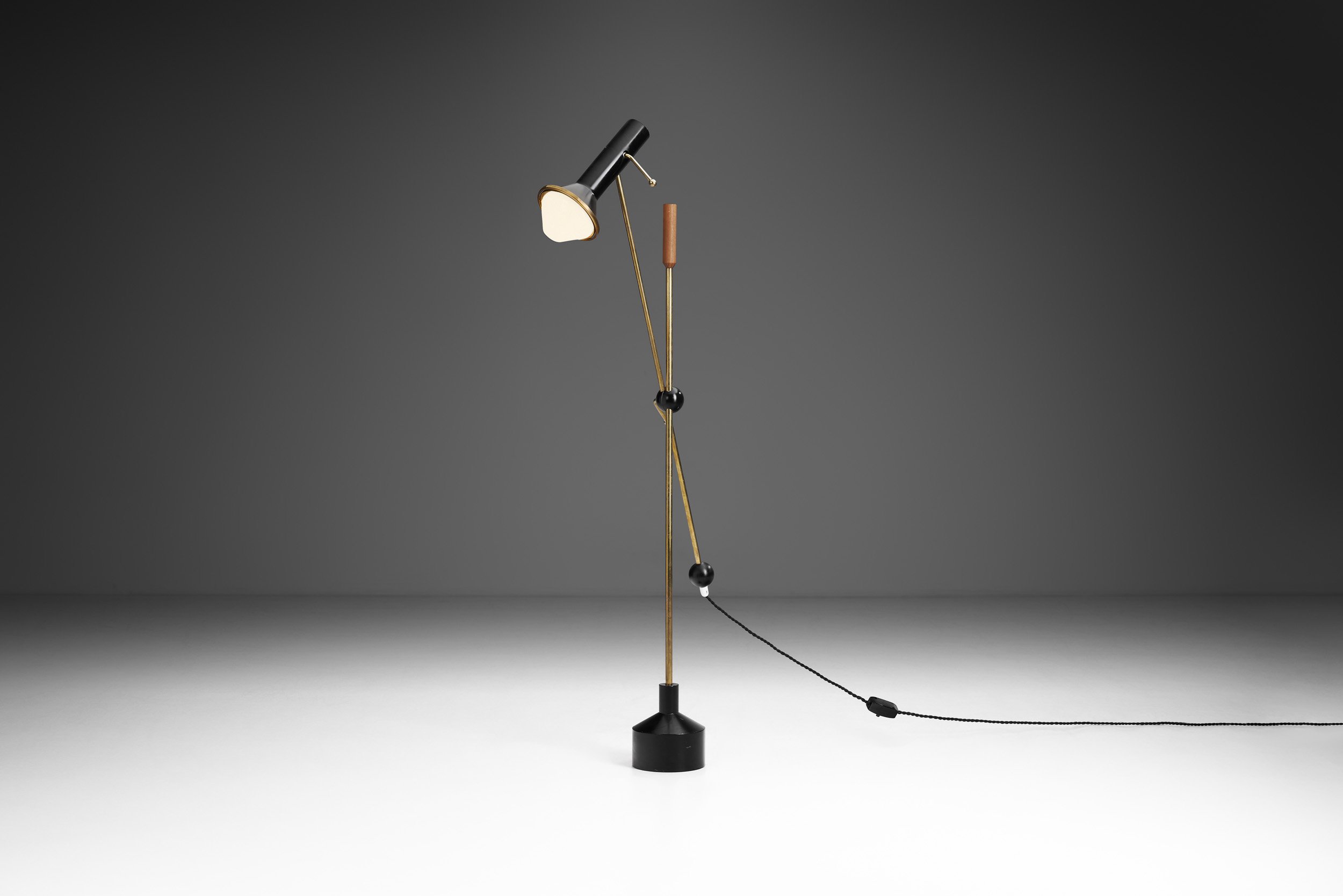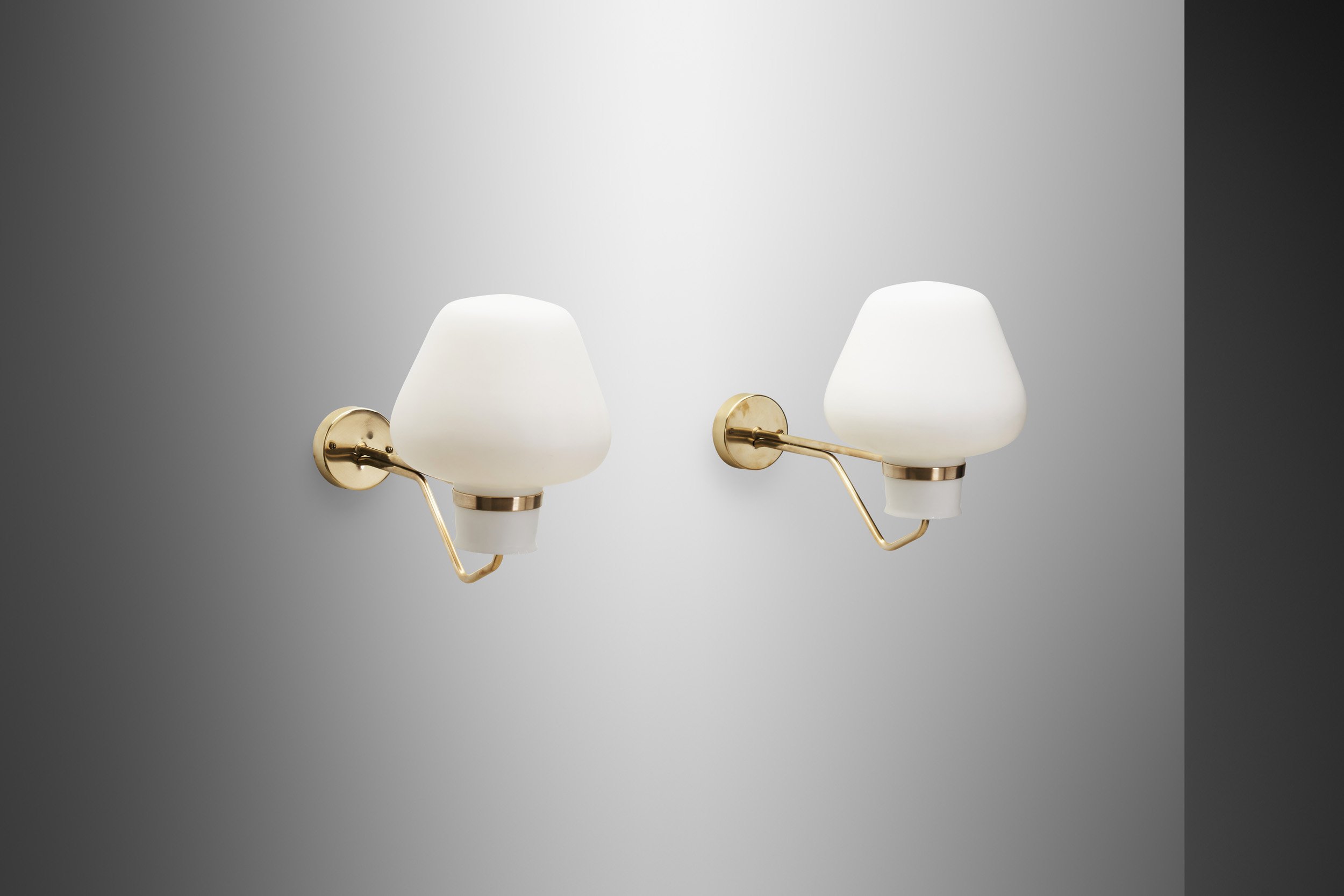Tapio Wirkkala Rare Floor Lamp Model "K10-47" for Idman Oy, Finland 1960s (sold)





















Tapio Wirkkala Rare Floor Lamp Model "K10-47" for Idman Oy, Finland 1960s (sold)
Tapio Wirkkala (1915-1985) was a multitalented design genius, widely considered a leading figure of modern Finnish industrial art. This lamp model is one of the cornerstones of Tapio Wirkkala´s repertoire; this groundbreaking piece is one of the original adjustable lamps with angular opal light bulbs that launched a series of lamps with different designs, that were in production for 30 years from the late 1950s until the late 1970s.
This specific model is very hard to come by, truly a holy grail for any collector and design aficionado. The structure shows Wirkkala’s genius in every line, joint, and idea. Showing the designer’s great consideration for functionality besides the aesthetic dimension, the height, width, and depth are all adjustable in different directions. This is the result of the ingenious ball joint on the brass pole that ends in a teak handle. Besides the unique structural solutions, the design also features a versatile medley of shapes and materials with a black lacquered cast iron base, brass poles, and a black lacquered metal shade. While the structure, with its dual brass poles is similar to the “crane” model, there are a number of details that make this lamp even more distinctive, starting with the lightbulb. It was designed by Tapio Wirkkala himself and is still in production. Its unique shape adds to the inherently modernistic look of this mode. The designer’s sticker can be found on the shade. Idman Oy produced the models of some of the most renowned Finnish lighting designers of the time, including Tapio Wirkkala, Mauri Almari and Maria Lindeman.
Wirkkala's present “K10-47” floor lamp remains an enduring emblem of Finnish design history, celebrated for its unique solutions and elemental style. Its ability to harmonize with diverse aesthetics while providing efficient lighting makes it a coveted and iconic piece, attesting to the enduring appeal of Finnish mid-century lighting design.
SOLD
Condition:
In good vintage condition. Wear consistent with age and use. The brass has a beautiful patina.
Dimensions:
17.32 in W (lamp stand is adjustable) x 5.51 in D x 46.25 in H
44 cm W (lamp stand is adjustable) x 14 cm D x 117.5 cm H
Literature:
Bibliography : 'Idman: Decorative lamps list', Catalogue de Sales, no. 143, Helsinki, 1961. pp. 60, 84
M. Av, 'Tapio Wirkkala : Eye Hand and Thought', Edition WSOY Finland, Museum of Art and Design Helsinki, 2002. p.387
About the designer:
Tapio Wirkkala (1915-1985) can be described as one of the icons of Finnish design and a symbol of the international success of postwar Finnish design. He was a versatile designer and artist who could shift fluently between different materials and crossed established professional boundaries: he worked on everything from refrigerators to banknotes and from furniture to striking jewels. The most important materials for Wirkkala were wood and glass – he never ceased to explore the possibilities they offer.
Tapio Wirkkala studied sculpture at the Helsinki Central School of Industrial Design from 1933 until 1936, but he was also a self-studied artist in many areas, including glass design. His success as a glass artist began in 1946 when he designed one of his most famous works, the Kantarelli vase, for Iittala. Wirkkala gained worldwide success in 1951 at the Milan Triennial, where he received three Grand Prix awards: for the exhibition architecture, glass design and wooden sculptures. Many of his glass works for Iittala were also awarded later in the 1950s at the Milan Triennial.
Tapio Wirkkala was also a renowned furniture designer. He started his career as a sculptor in the 1930s, but abandoned the traditional sculpture in the post-war years. The result was a series of unique plywood sculptures which combined form and movement in the vibrant, densely lineated surface of plywood. Wirkkala’s sculptures represented exceptional abstractionism and gave Finnish sculpture art a new direction at a time when the official line preferred monuments and heroic sculptures.
Tapio Wirkkala is also renowned for his innovative use of wood in furniture design. The eye-catcher X-frame table was designed by Wirkkala in 1958 and is today manufactured by Artek. Tapio Wirkkala was also a sculptor. He started his career as sculptor in the 1930s, but abandoned the traditional sculpture in the post-war years. At the beginning of the 1950s, alongside with other works, he started to develop an entirely new relationship with sculpture and a new technique to be used.
One of Wirkkala’s most significant commissions abroad was the work at the Rosenthal porcelain factory in Germany: he worked as a freelance designer for Rosenthal for almost 30 years, and the most influential result was the Paper Bag vase (1977), still today one of Rosenthal’s best-selling products.










